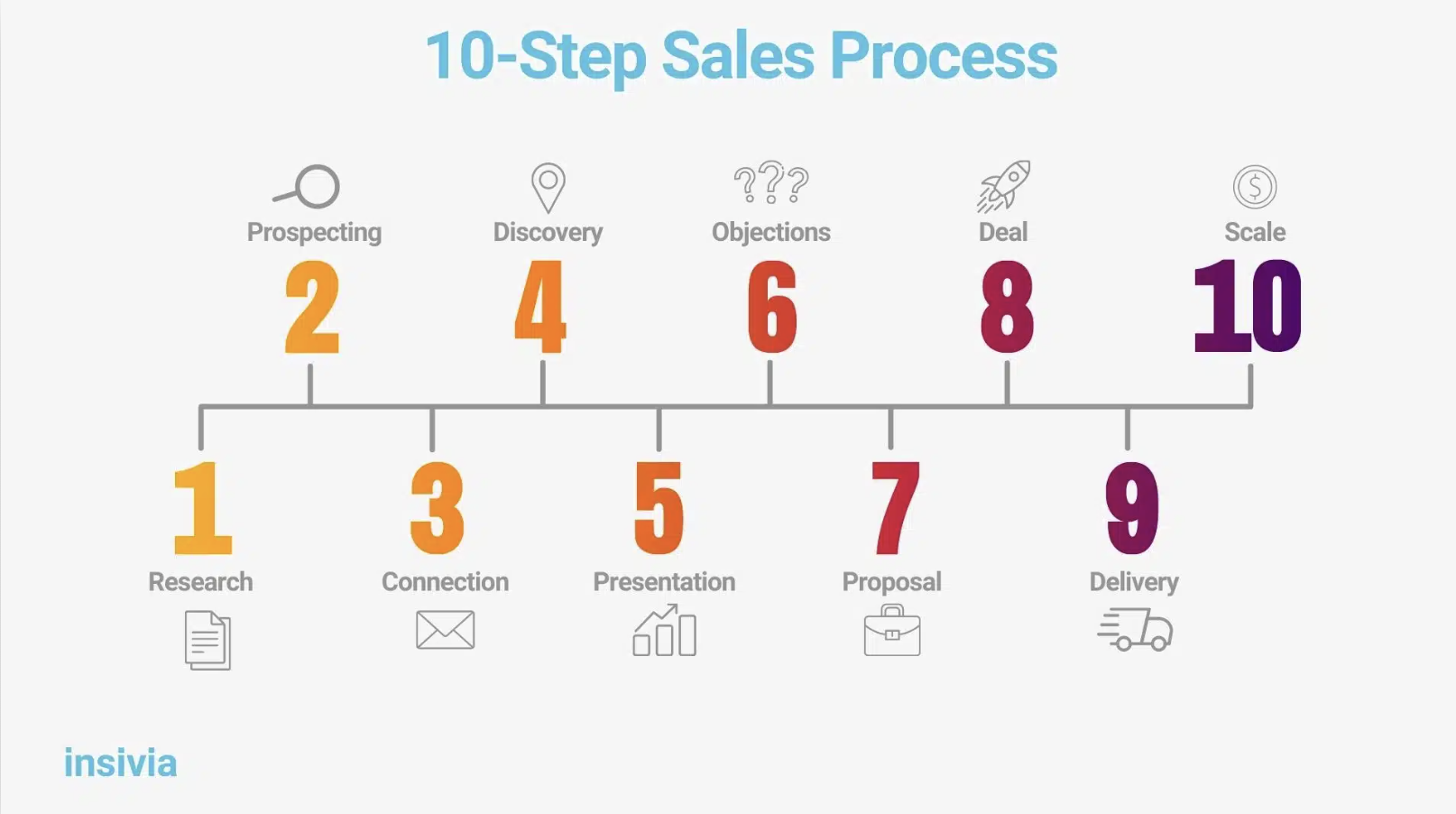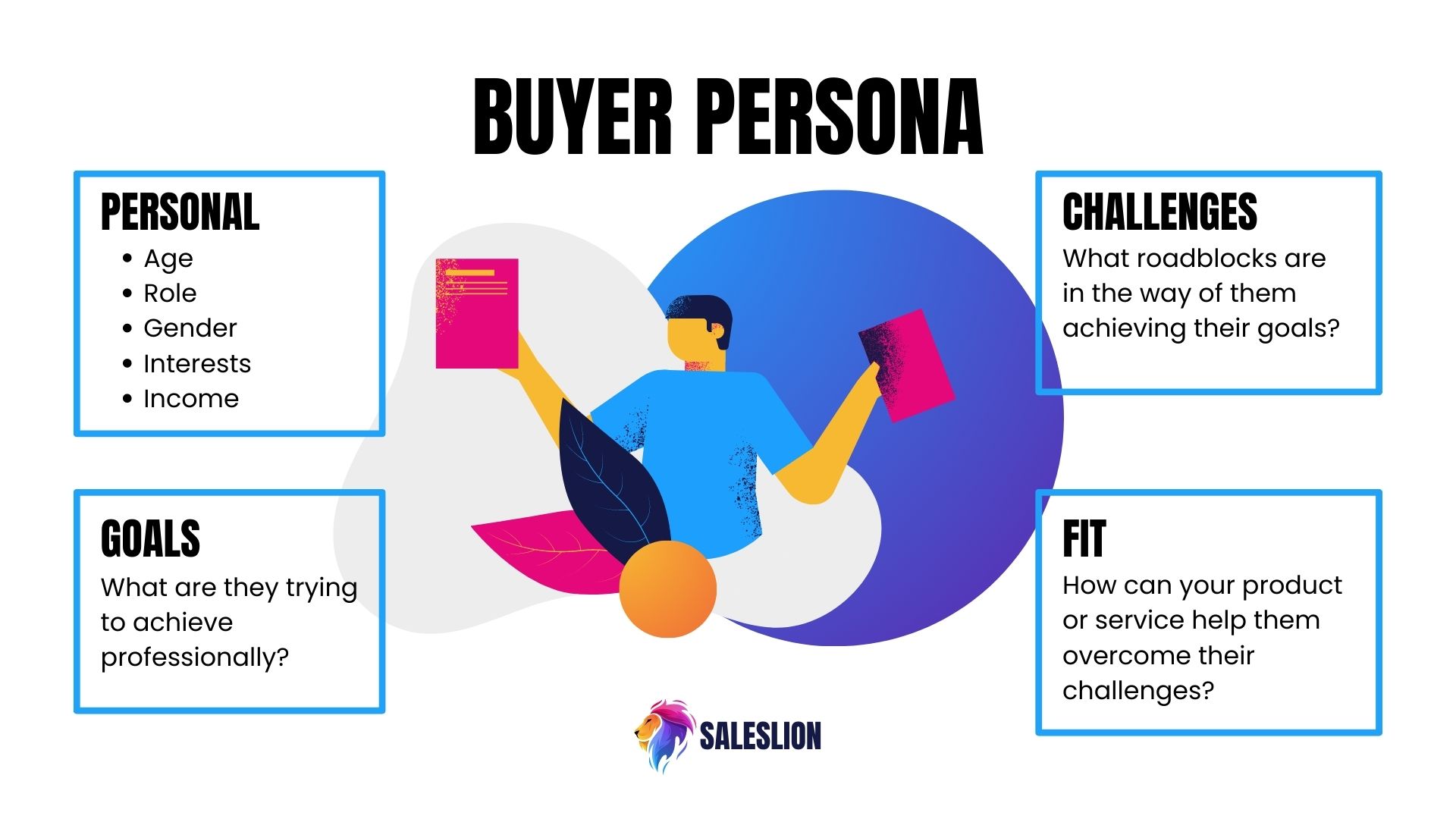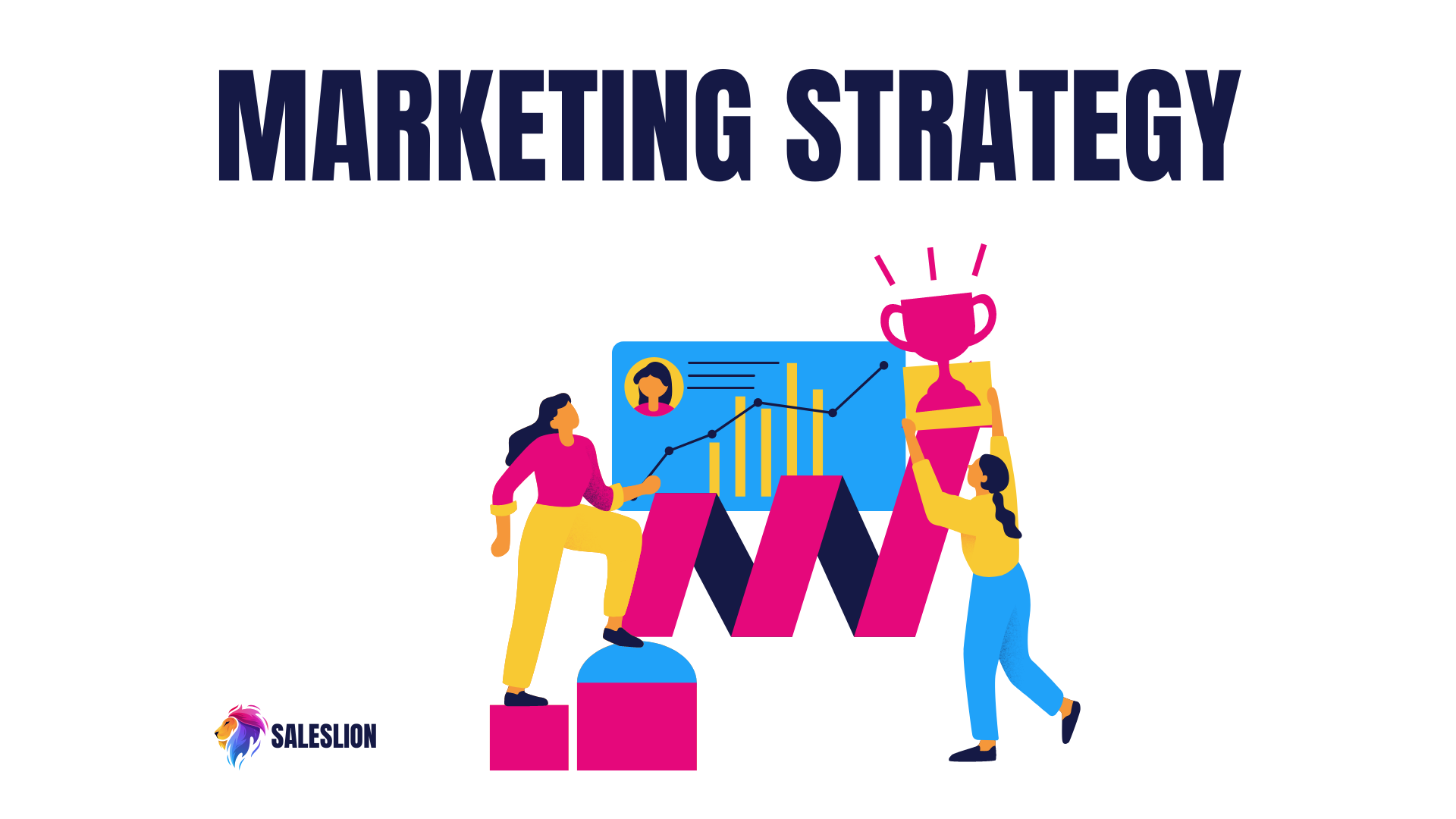Aligning Sales and Marketing for Improved Collaboration

For businesses to succeed and grow, they need effective sales and marketing collaboration and collective efforts towards a common goal. Although both teams have different processes and objectives, they serve the same purpose: acquire and retain customers to generate revenue.
In today's modern sales landscape, achieving collaboration between sales and marketing is crucial.
By aligning sales and marketing teams, companies can boost their bottom line and improve their customer acquisition and retention rates. In this article, we will talk about the importance of sales and marketing along with why their collaboration is so crucial for B2B company success.
What Does A Sales Process Involve
A sales process refers to a series of steps or stages that a salesperson follows to move a potential customer from the initial stage of awareness to the final stage of making a purchase.
A typical B2B sales process includes activities such as research, prospecting, building relationships, presenting the product or service, handling objections, presenting the proposal, closing the sale, delivering the solution, and following up.

Above is an example of a sales process timeline from start to finish.
A well-defined sales process helps sales teams to focus on the customer's needs and guide them through the decision-making process, ultimately leading to improved customer relationships and increased revenue.
For B2B companies, the sales process is typically more complex than it is for B2C companies. It involves multiple decision-makers, a longer sales cycle, and a higher degree of customization.
Most face-to-face interactions during the sales process are between customers and sales reps, but as the sales process comes to a close, the involvement of additional stakeholders, such as department heads, procurement teams, and executives may get involved, leading to negotiations and contract discussions.
Research
One of the first things that great sales teams and sales reps do is research their target audience. If you don’t know who they are selling to, your efforts will be wasted.
That is why creating a buyer persona, like the image below, is a key factor in having a successful sales process.

Prospecting
The next step in a typical sales process is the process of prospecting.
Prospecting is the method of identifying potential customers and qualifying leads so that your sales team can start targeting them and pulling them into the sales funnel.
While B2B companies with a large existing customer base can generate more than half of their new leads from referrals, all companies, especially ones with a very small customer base, need to spend time in this stage of the process.
Connection
Also known as the relationship-building step, connection is important for sales reps to make a good first impression.
By responding quickly to customer emails or by personalizing messages, you can gain the trust of your customers.
This trust is essential for every subsequent step in the sales process as it ensures that the customer feels comfortable moving forward.
Discovery
After you have made a strong enough connection with your prospects and they have expressed interest in your company and the solutions that it offers, it is time for discovery.
While a discovery call can be a great opportunity to explain all about your company and why you are special, it is more important to use discovery calls as a chance to learn about each specific prospect and understand their unique needs and wants.
By taking the time to listen during this step in the process, you will be better equipped to personalize and tailor the experience for your customers going forward.

Presentation
Now, the presentation, or the demo, is the perfect opportunity for you to demonstrate your solution. Using the information gathered in the discovery call about your prospect’s needs, you can tailor your presentation to show how your solution can meet their specific and unique needs.
Presentations are important steps as they allow you to communicate the value of your product or service to potential customers and demonstrate your solution’s unique features and benefits.
Objections
While some customers might be completely on board from the moment they meet your sales reps, my guess is that most will have objections.
Whether around price, size, or onboarding time, it is important to take the time to overcome any objections or concerns your prospects may have so that they both have more trust in you and are more likely to continue on in the sales process.
Proposal
After objections or concerns have been resolved, it is time to present your prospects with a sales proposal.
The best sales proposals are concise and personalized. Being clear and concise ensures that there is no confusion regarding what is being offered and for what price.
For a more detailed guide to building a great B2B sales proposal, check out this article with 10 tips for creating an effective proposal.
Deal
Once the proposal is sent and approved, it is time for the deal to be closed.
This stage is crucial for the success of any sales effort as it's the point where all the previous stages come to fruition. Effective communication, strong negotiation skills, and a deep understanding of the prospect's needs and pain points are critical to closing a deal successfully.
The closing stage is not only about signing the contract but also about building a long-term relationship with the customer and ensuring their satisfaction with the product or service.
Delivery

This step of the sales process is very small and often overlooked but involves the implementation and integration of your solution into your prospect’s company.
This is a crucial step to ensuring that your customers receive the quality of service that they were expecting. If you build up their trust during the sales process but then let it go by not supporting them during the integration or onboarding process, those customers will be much more likely to churn in the future.
Delivering a complex solution in a timely manner and supporting the customer while they implement it into their current processes is critical.
Scale
This step takes place after the deal is closed and the solution has been delivered.
Scaling effectively involves actively nurturing your customers in your customer base to build long-standing relationships and loyalty.
This loyalty can then be turned into either positive word of mouth or referrals, both of which are crucial elements to scaling a company.
What Does A Marketing Process Involve
A marketing process typically involves several stages that work together to create demand for a product or service and ultimately convert that demand into sales.
By following the steps below, a marketing process can help businesses effectively promote their products or services, generate demand, and achieve their business goals.
Market Research
Market research is a vital stage in any marketing process. It involves gathering data to understand the target audience, their behavior, needs, and preferences.
By conducting thorough research, businesses can identify the gaps in the market and create products and services that fulfill customer needs and preferences.
This is similar to the research phase of the sales process. However, the difference between the two is that market research allows companies to identify where they are in the market relative to other companies and competitors while buyer personas involve researching the specific target audience.
Branding
This step is one of the most crucial to the effectiveness of your company’s marketing.
Branding is the process of creating and curating a consistent brand identity through logo, messaging, and visual identity. Strong branding can help a business stand out from its competitors, build brand recognition, and establish a sense of trust and loyalty with its customers.
Without effective branding, your company will not be able to differentiate itself from other companies and will become lost in the market. Especially since technology has widened the market and deepened the competition, branding is a critical phase in the marketing process
Positioning
This stage involves identifying the unique selling proposition of the product or service to differentiate it from competitors and position it in the market.
By highlighting the key benefits of the product or service, businesses can create a compelling value proposition that resonates with their target audience.
Because of this the branding phase and the positioning can often just be merged into a single step in the process.
Marketing Strategy
Developing a comprehensive marketing strategy is critical for the success of any marketing campaign.
This stage involves creating a plan for advertising, promotion, and communication of the product or service to the target audience, taking into account factors such as budget, target audience, and marketing channels.
This is also a crucial part of any marketing team’s productiveness because if the marketing leaders or associates in your business do not know where the company is headed or the best way to get there, their efforts will be wasted.

Content Creation
Content creation is the process of developing marketing collaterals such as blogs, social media posts, videos, infographics, and whitepapers to reach the target audience. Creating engaging, informative, and relevant content can help businesses attract and retain customers.
This is also known as inbound marketing: the process of attracting potential customers to your brand through content marketing, social media marketing, SEO, and other non-intrusive tactics.
SEO also plays a major role in effective marketing and content creation especially since remote selling is now commonplace.
Campaign Management
This stage can be classified into the category of outbound marketing. Outbound marketing is the traditional method of marketing that involves reaching out to potential customers through email marketing, cold calling, advertising, and direct mail.
This stage involves executing campaigns and measuring results through key performance metrics such as click-through rates, conversion rates, and ROI.
By monitoring and analyzing campaign performance, businesses can refine their strategies and improve their marketing efforts.
Lead Generation
Lead generation is the process of attracting potential customers and converting them into leads through various marketing channels by providing solutions to their problems.
By nurturing leads and building relationships with potential customers, businesses can increase their chances of converting them into paying customers.
How They Fit Together
As you have probably noticed, marketing and sales overlap over the lead generation process.
Here at Saleslion, while our specialty is sales process optimization, we also understand the importance of marketing as well.
Marketing and sales go hand in hand.
The primary difference between marketing and sales is that marketing focuses on creating brand awareness and demand for your product or service while sales focuses on converting that awareness and demand into actual sales.
As previously discussed, marketing aims to attract and engage potential customers through various channels such as advertising and content marketing.
Sales, on the other hand, emphasize building relationships with those potential customers, identifying their needs, and convincing them to purchase the solution your company offers.
These two processes have many similarities, from the necessity of research around the target market and audience to the use of data to improve current systems and strategies. Perhaps the biggest overlap is the lead generation phase in each process.
Because lead generation occurs usually as the last step of the marketing process and as one of the first of sales processes, this can be the biggest area of collaboration between sales and marketing teams.
How Collaboration Can Scale Your Company
Marketing and sales processes overlap.
So what?
Well, with that overlap comes the opportunity for collaboration.
Both marketing and sales process optimization can be maximized through collaboration between teams.
Because both sales reps and marketers need to conduct research in order to work effectively, collaboration can take the form of combined research efforts. This will allow all of your internal processes to become more streamlined and intentional, increasing the effectiveness of your company.
Another way that collaboration can help your company scale is through sharing data. Data or analytics pulled from marketing efforts and campaigns can help with sales process optimization and sales strategy improvement and vice versa.
Finally, with lead generation as a shared step, sales and marketing teams can create feedback loops that improve both systems and help your company scale quickly and effectively.
How Sales Audits Can Improve Sales and Marketing Collaboration
Sales audits are great ways to optimize your sales process. And because sales and marketing go hand in hand, they can be a great way to improve your marketing efforts as well.
Below are some key ways that sales audits can help your sales and marketing better collaborate
Identifying Gaps and Opportunities
A sales audit can help identify gaps in the sales process and areas where marketing can provide support. By identifying areas where marketing can help, sales teams can work more effectively and efficiently.
Better Alignment of Messaging
A sales audit can also help ensure that sales and marketing teams are aligned on messaging, positioning, and branding. This can help ensure that the sales team is presenting a consistent message to customers and prospects, which can improve their effectiveness.
Improving Lead Quality
A sales audit can help identify where leads are coming from and how they are being generated. By working together to improve lead quality, both sales and marketing teams can increase their effectiveness and efficiency.
Streamlining Processes
Finally, a sales audit can help identify areas where processes can be streamlined, which can save time and improve collaboration. By working together to streamline processes, sales and marketing teams can focus on what they do best.
Overall, having collaboration between your sales and marketing teams can be incredibly beneficial for your B2B business. And if you are interested in improving your internal collaboration for marketing and sales process optimization, reach out to us today for a sales audit.
Ready to reinvent your sales process and tools?
One quick call and we'll share our approach - no pressure.
Schedule your demo